OUR PLANET 2024
Dimensions variable, the installation can be changed to fit any space, height or width depending on how many coral plates are used.
Diverse experiences as a medical practitioner made me reflect on the human flaws and influences of the human condition, and the subsequent impact on each other and the environment.
This series of work has a personal significance. In July 2023 I developed immersion pulmonary oedema a condition peculiar to scuba diving and had a cardiac arrest at the surface.
Now, unable to dive it was a trigger to make work about coral bleaching that I witnessed over 10 years as a tribute to the beautiful underwater world that I was so privileged to share.
The following work is an installation, that is part of a series about pollution and climate change. It uses 5 tiny pieces of bleached dead coral that I collected with permission from a Filipino beach, my last diving holiday. The whole beach for as far as the eye could see was made entirely of dead coral. It was exhibited at Freshair sculpture in 2024.
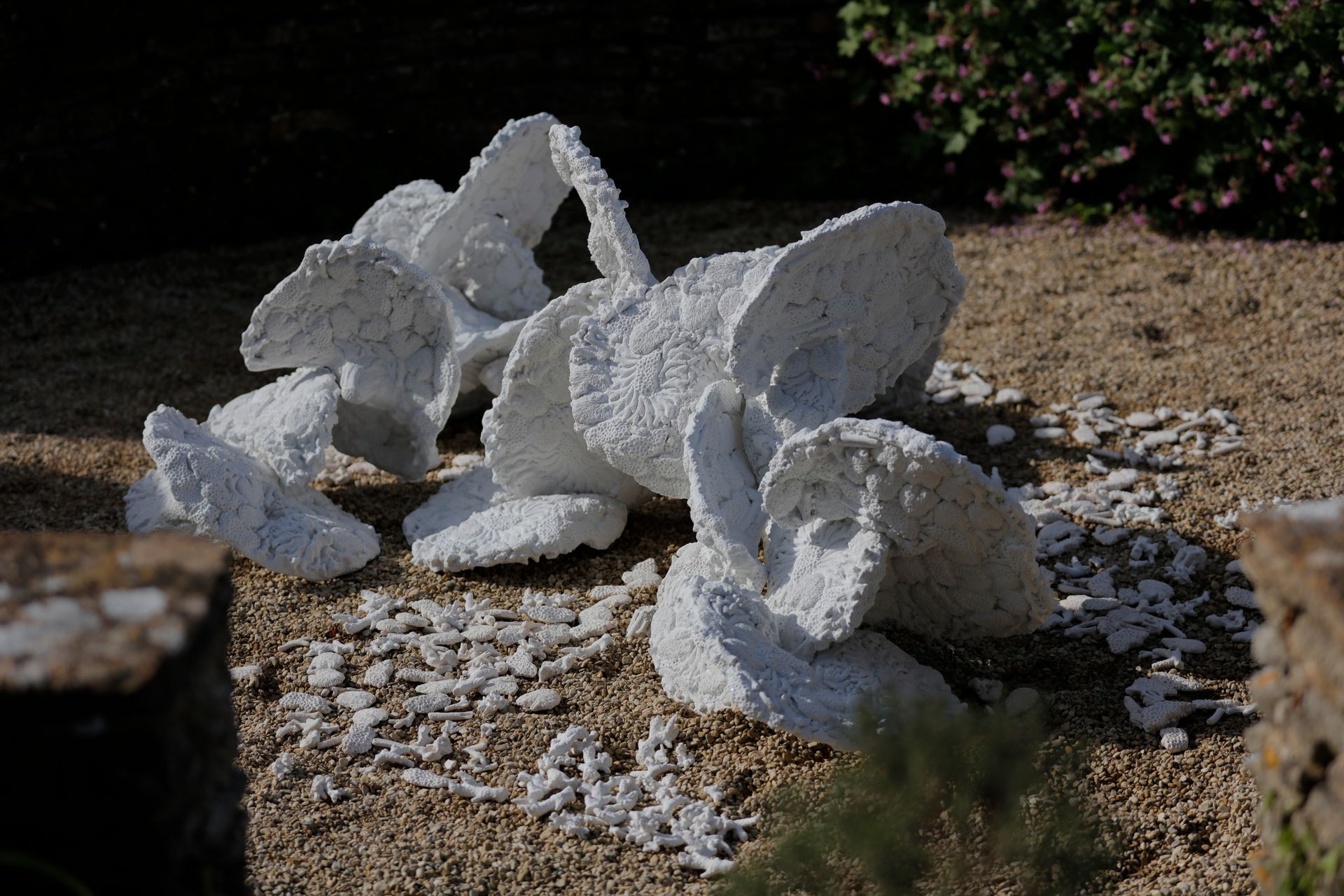
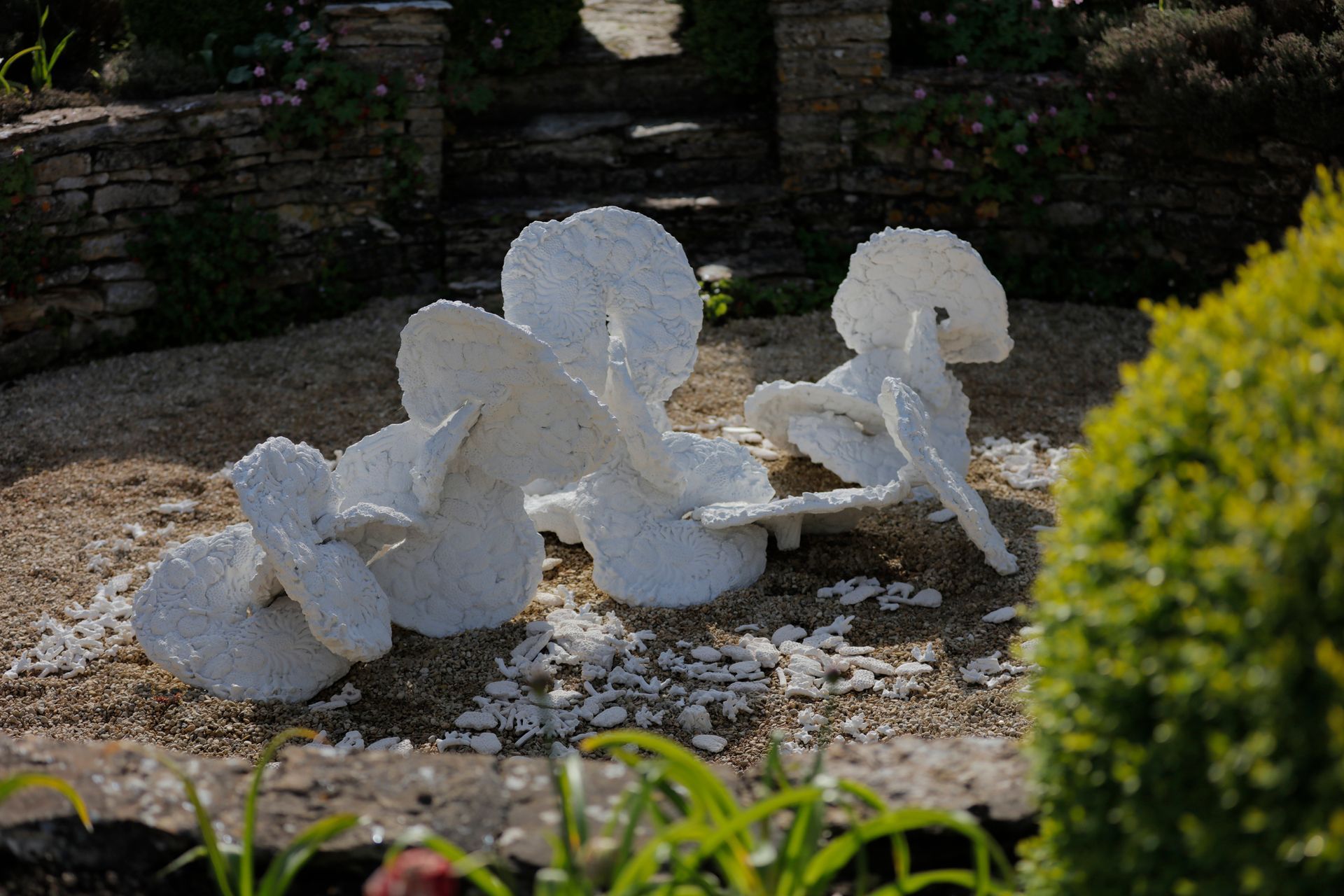
Above, Installation at Freshair Sculpture 2024, installation can be changed to fit any space, height or width depending on how many coral plates are used
The five tiny pieces of bleached coral are multiply cast to create coral plates, simulating a coral reef. The white marble Jesmonite is reminiscent of mausoleums.
Coral and algae live symbiotically providing coral with food and colour. Rising ocean temperatures and pollution stress this relationship, the algae leaves and the coral bleaches and dies. Coral reefs comprise some of the most biologically diverse and valuable ecosystems on the planet. They are home to one-third of all sea life and support more species per unit area than any other marine environment.
In 2024, global heating has pushed the world’s coral reefs to a fourth planet-wide mass bleaching event that is on track to be the most extensive on record. Some 54% of ocean waters containing coral reefs have experienced heat stress high enough to cause bleaching. We will continue to lose thousands of square kilometres of coral reef; unless, of course, we do something about it.
Below, detail of installation.
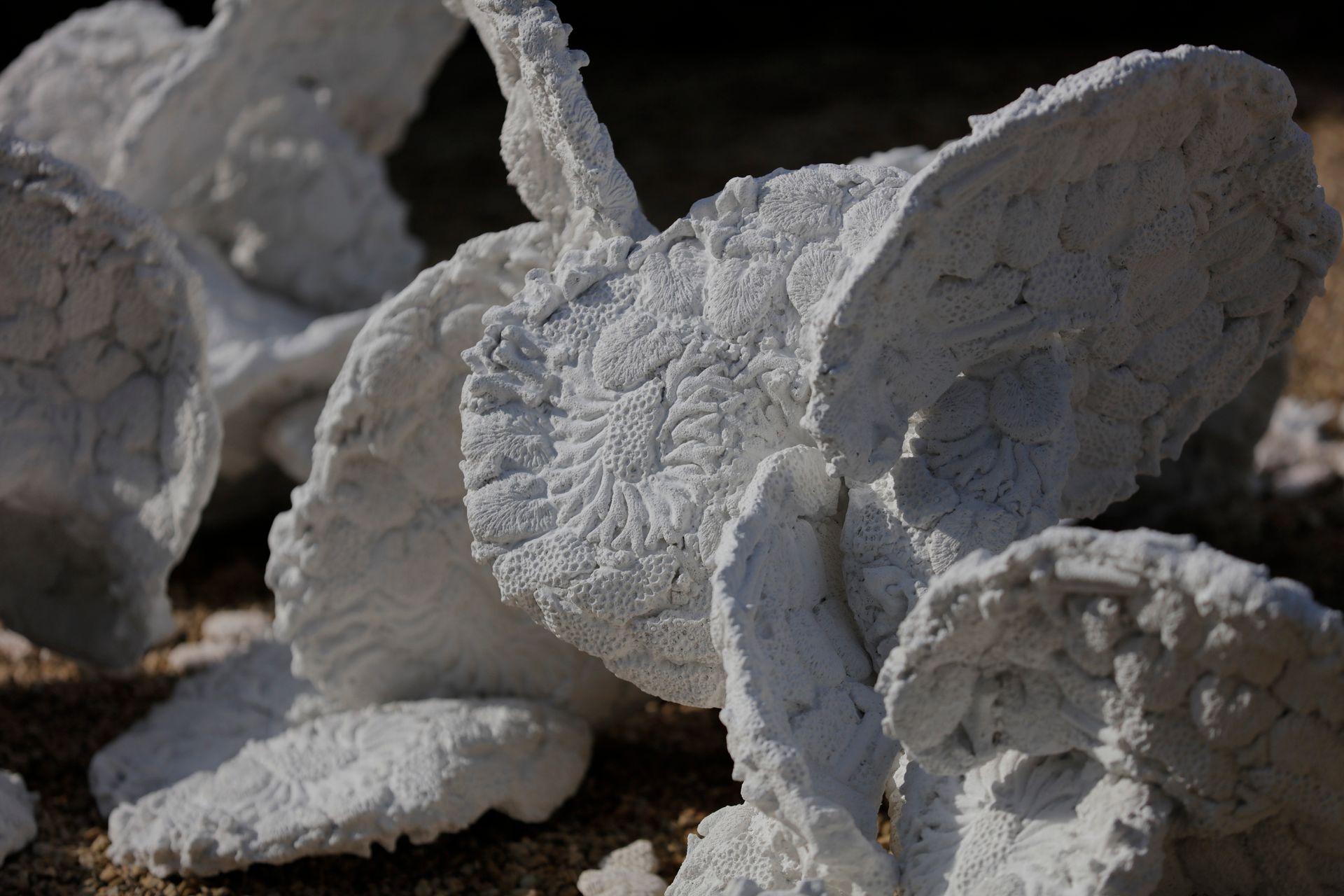
Below , studio installations
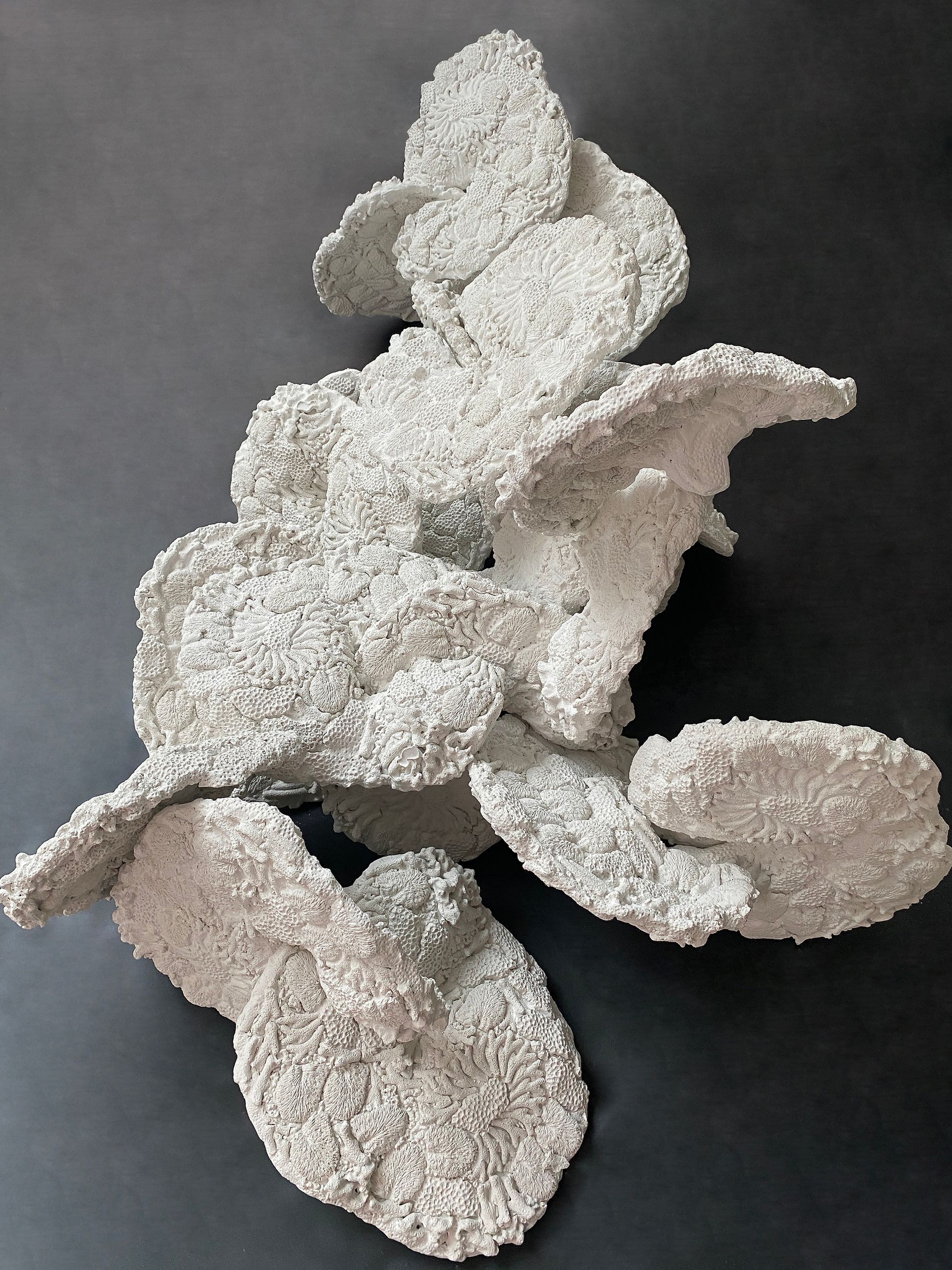
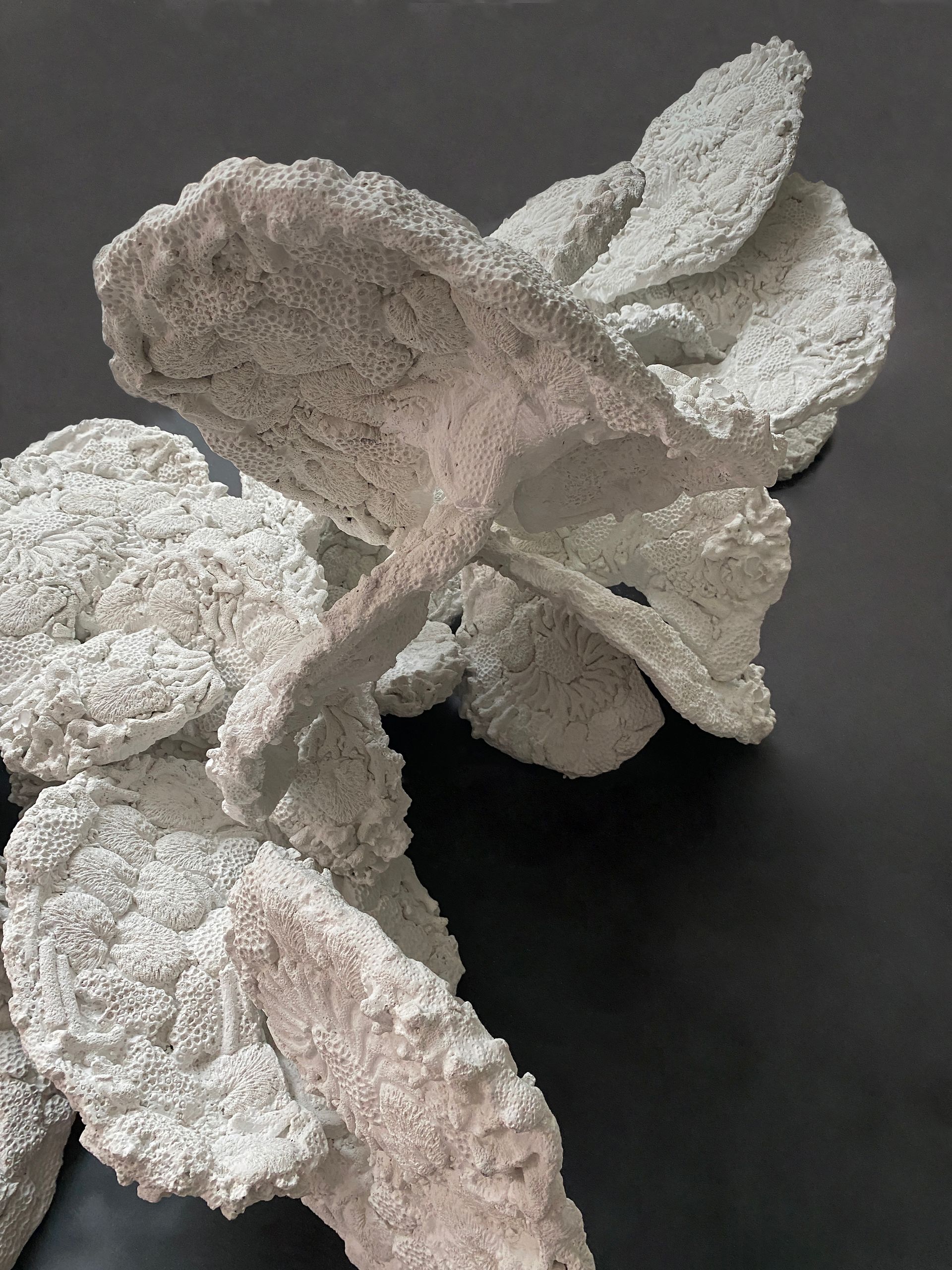
Below, detail showing how two coral plates slot together. The installation can be addapted to any space, width and height depending on how many plates are used.
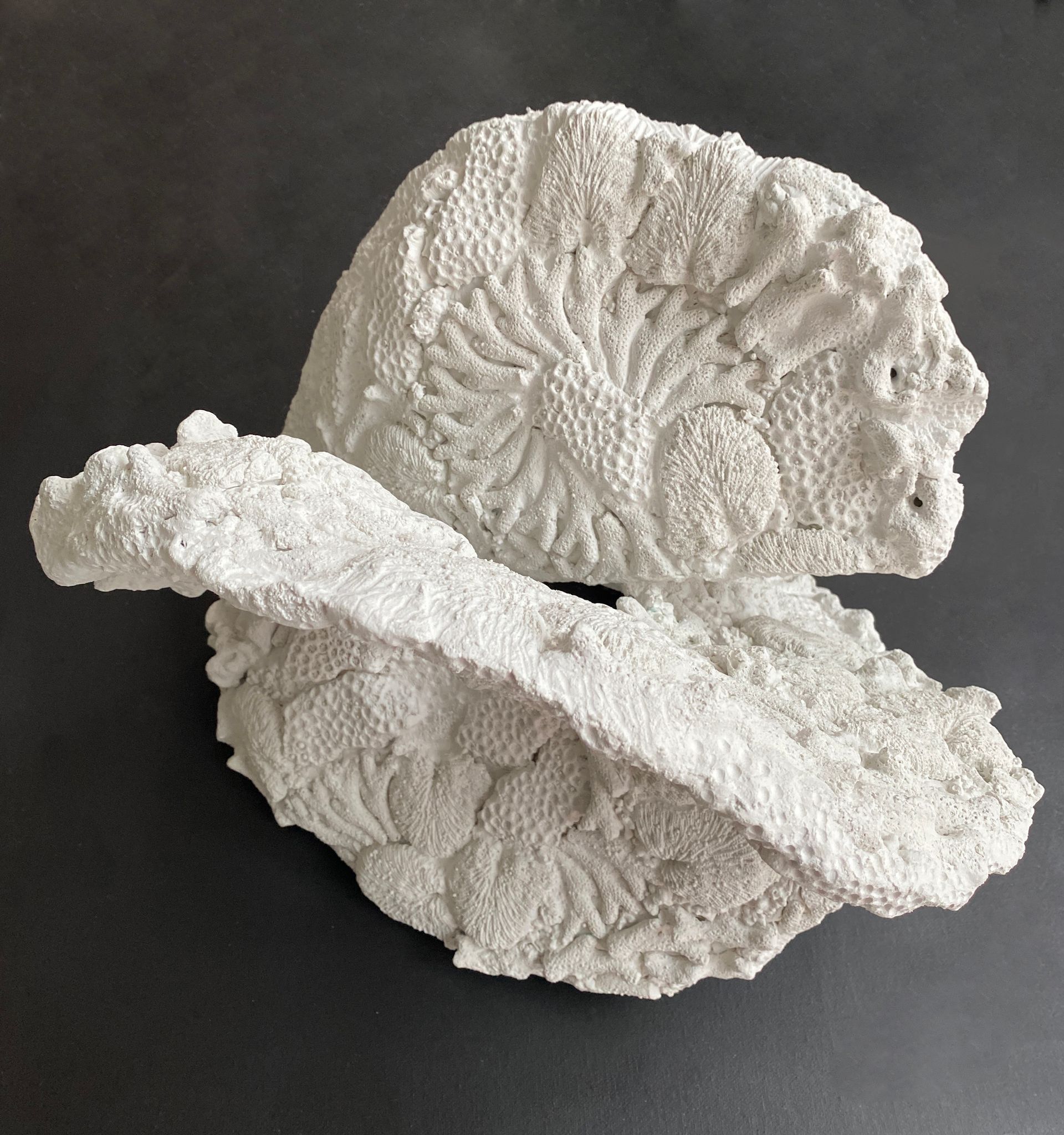
OUR PLANET 2024
Dimensions variable, the installation can be changed to fit any space, height or width depending on how many coral plates are used.
Diverse experiences as a medical practitioner made me reflect on the human flaws and influences of the human condition, and the subsequent impact on each other and the environment.
This series of work has a personal significance. In July 2023 I developed immersion pulmonary oedema a condition peculiar to scuba diving and had a cardiac arrest at the surface.
Now, unable to dive it was a trigger to make work about coral bleaching that I witnessed over 10 years as a tribute to the beautiful underwater world that I was so privileged to share.
The following work is an installation, that is part of a series about pollution and climate change. It uses 5 tiny pieces of bleached dead coral that I collected with permission from a Filipino beach, my last diving holiday. The whole beach for as far as the eye could see was made entirely of dead coral. It was exhibited at Freshair sculpture in 2024.
Below, Installation at Freshair Sculpture 2024, installation can be changed to fit any space, height or width depending on how many coral plates are used


The five tiny pieces of bleached coral are multiply cast to create coral plates, simulating a coral reef. The white marble Jesmonite is reminiscent of mausoleums.
Coral and algae live symbiotically providing coral with food and colour. Rising ocean temperatures and pollution stress this relationship, the algae leaves and the coral bleaches and dies. Coral reefs comprise some of the most biologically diverse and valuable ecosystems on the planet. They are home to one-third of all sea life and support more species per unit area than any other marine environment.
In 2024, global heating has pushed the world’s coral reefs to a fourth planet-wide mass bleaching event that is on track to be the most extensive on record. Some 54% of ocean waters containing coral reefs have experienced heat stress high enough to cause bleaching. We will continue to lose thousands of square kilometres of coral reef; unless, of course, we do something about it.
Below, detail of installation.

Below , studio installations.


Below, detail showing how two coral plates slot together. The installation can be addapted to any space, width and height depending on how many plates are used.

OUR PLANET 2024
Dimensions variable, the installation can be changed to fit any space, height or width depending on how many coral plates are used.
Diverse experiences as a medical practitioner made me reflect on the human flaws and influences of the human condition, and the subsequent impact on each other and the environment.
This series of work has a personal significance. In July 2023 I developed immersion pulmonary oedema a condition peculiar to scuba diving and had a cardiac arrest at the surface.
Now, unable to dive it was a trigger to make work about coral bleaching that I witnessed over 10 years as a tribute to the beautiful underwater world that I was so privileged to share.
The following work is an installation, that is part of a series about pollution and climate change. It uses 5 tiny pieces of bleached dead coral that I collected with permission from a Filipino beach, my last diving holiday. The whole beach for as far as the eye could see was made entirely of dead coral. It was exhibited at Freshair sculpture in 2024.


Above, Installation at Freshair Sculpture 2024, installation can be changed to fit any space, height or width depending on how many coral plates are used
The five tiny pieces of bleached coral are multiply cast to create coral plates, simulating a coral reef. The white marble Jesmonite is reminiscent of mausoleums.
Coral and algae live symbiotically providing coral with food and colour. Rising ocean temperatures and pollution stress this relationship, the algae leaves and the coral bleaches and dies. Coral reefs comprise some of the most biologically diverse and valuable ecosystems on the planet. They are home to one-third of all sea life and support more species per unit area than any other marine environment.
In 2024, global heating has pushed the world’s coral reefs to a fourth planet-wide mass bleaching event that is on track to be the most extensive on record. Some 54% of ocean waters containing coral reefs have experienced heat stress high enough to cause bleaching. We will continue to lose thousands of square kilometres of coral reef; unless, of course, we do something about it.
Below, detail of installation.

Below , studio installations.
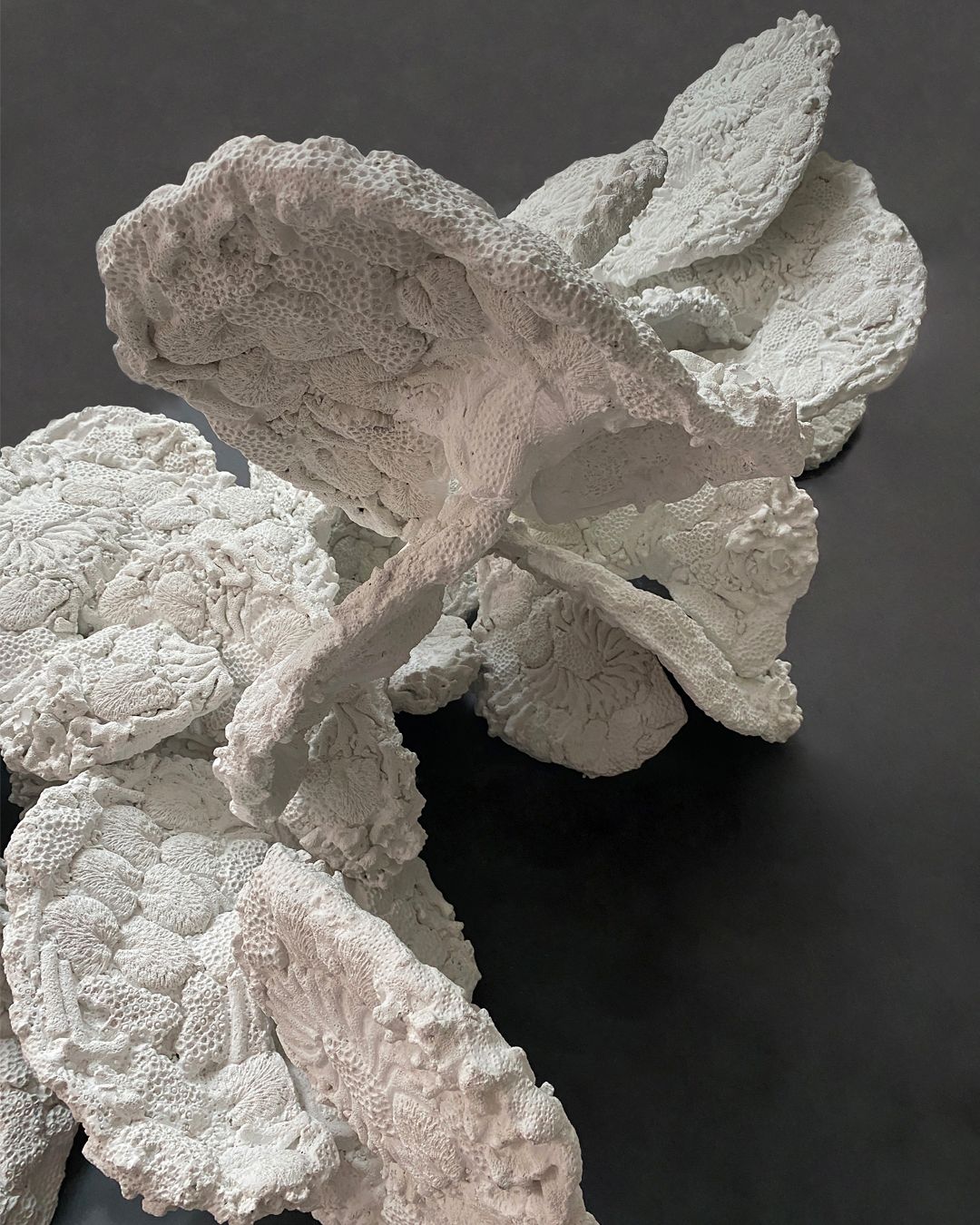

Below, detail showing how two coral plates slot together. The installation can be addapted to any space, width and height depending on how many plates are used.
